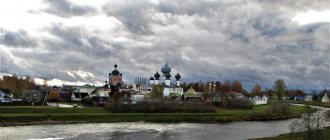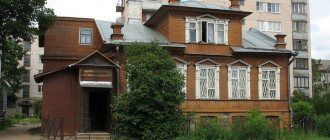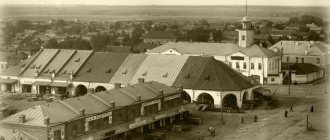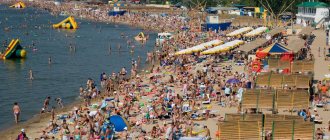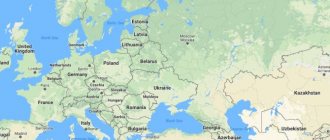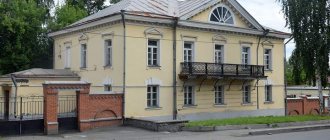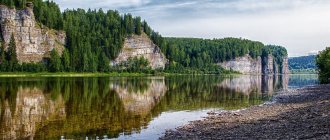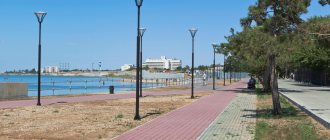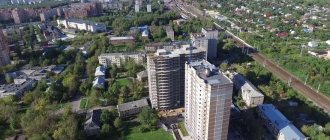The small provincial town of Svetogorsk is located in the Vyborg district of the Leningrad region. It gained its fame thanks to the nearby oldest pulp and paper mill in Russia, which produces Ballet and Svetocopy paper, as well as its close proximity to the Finnish border. The importance of the city in the modern world
The city traces its history back to 1887, when Baron Adi Standerskold, having purchased land and part of a waterfall in this region of Finland, began construction of a wood-oil plant. Subsequently, the plant and the village that grew up near it were named Enso. The city received its modern name in 1949 after the nearby Svetogorsk hydroelectric power station.
Currently, Svetogorsk is part of the municipal settlement "Svetogorsk urban settlement" with an area of 411 km², together with the villages of Lesogorsky, Losino and Pravdino.
Distinctive features of the city
Svetogorsk is located in the north-west of the Leningrad region, 188 km from St. Petersburg, on the banks of the Vuoksa River.
Near the city, at a distance of 1 km, there is the Russian-Finnish border, which has existed since 1947. In 2002, a modern checkpoint for road transport was built here.
Short story
Svetogorsk (Leningrad region) from the time of its foundation in 1887 until 1940 was under the jurisdiction of Finland. At the end of the Finnish War, the city of Enso, along with the Karelian Isthmus, passed to the USSR. During the Great Patriotic War, from June 1941. Until April 1944, the territory of the city was occupied by the Germans.
After liberation, the city and adjacent settlements again ceded to the USSR. The history of the city of Svetogorsk began in 1949 and continues to this day.
Climate
Svetogorsk is located on the Karelian Isthmus, which has a comfortable climate. The influence of the Atlantic softens the winter cold (average temperature in winter is -8). The temperate continental climate, close to maritime, is characterized by high rainfall. The wettest month is August (up to 83 mm of precipitation). The best time to visit Svetogorsk is the white nights in June.
Ecology
The city is located in a picturesque location, among lakes and forests, but the environmental cleanliness is disrupted by the work of the plant, which today is part of the American concern International Paper, as well as the Industrial and Domestic Waste Landfill created by the Pulp and Paper Mill.
The group of environmental activists “Esno” is fighting to the best of its ability for a clean environment, in particular, for the installation of an eco-post for automatic air control. Two rivers flow through Svetogorsk: Unterniska, which received its name on Finnish territory, and the Gryazny stream, so named by residents already in Soviet times.
At the beginning of the twentieth century, people swam and washed clothes in these rivers, but now the environmental situation makes this impossible.
Population
According to statistics for 2022, 15.5 thousand people live in Svetogorsk. 93% of the city’s population are Russians.
Also live here:
- Ukrainians;
- Belarusians;
- Tatars;
- Armenians.
Flora and fauna
There are forests around the city. The forests here are mixed - spruce alternates with birch, alder and aspen. Closer to the bank of the Vuoksa River there are maples, lindens, oaks and hazel trees.
The forests are inhabited by:
- the Bears;
- hares;
- proteins;
- ferrets;
- lynx;
- wolves.
The lakes and rivers around the city are rich in fish. Here you can catch perch, pike, and bream. Wood grouse, ducks and geese are found on the banks, and black grouse and hazel grouse are found in the forests. The places here are very beautiful; many tourists come here to admire the nature surrounding the city.
Svetogorsk: the suffocating embrace of a paper tiger
For the Chinese, a paper tiger is a symbol of something menacing only in appearance, but actually harmless. Our city, where a large pulp and paper mill owned by Americans is located, is truly suffocating.
This source of foul smell looks quite idyllic
Birth injury
Actually, the current city of Svetogorsk, located in the Vyborg district of the Leningrad region, a kilometer from the border with Finland, was originally founded as a working village at a wood pulp (cellulose) plant, which over time became a large cardboard and paper factory. This was in 1887.
The enterprise, which gradually became the largest in this industry on the territory of the Grand Duchy of Finland as part of the Russian Empire, and the village with it were called Enso (“first-born”).
By the way
The plant gradually grew so much and became so significant that after the Soviet-Finnish Winter War of 1940, the USSR committed a direct violation of preliminary agreements and, with the help of direct armed intervention, seized the city and the enterprise into its territory.
After the Second World War in 1949, the village became the city of Svetogorsk, and a little later the plant became the Svetogorsk Pulp and Paper Mill. At that time, there were about 11 thousand inhabitants, according to data on January 1, 2021 - about 15 thousand; the peak year was 2011, when the population was 16 thousand people. According to unofficial data, the city-forming enterprise now employs about 3,000 workers, that is, approximately 20 percent of Svetogorsk residents.
But the plant became a real and very smelly giant in the 70s of the last century, when it was enlarged and expanded by the joint efforts of the Soviet Union and Finland.
Stalin's Empire Style in Svetogorsk
In black and white
These were the times when General Secretary of the CPSU Central Committee Leonid Brezhnev kissed in front of television cameras, including Urho Kekkonen , the President of Finland, which was considered the main capitalist friend of the USSR. Countries actively developed cleaning trade transactions, that is, non-cash transactions through mutual offsets.
One of the largest such transactions between the two countries was the large-scale renovation and expansion of the Svetogorsk Pulp and Paper Mill. The cost of the project in current prices was 1.7 billion euros. Work began in the fall of 1972. Especially to solve these gigantic tasks, eight large Finnish companies created a joint company, Finn-Stroi, which employed thousands and thousands of builders from the country of Suomi.
By the way
The total cost of Finn-Stroi projects in the Soviet Union amounted to more than five billion euros in current prices (in addition to the Svetogorsk plant, the Finns worked in Kostomuksha and on the construction of a pulp and paper mill in Vyborg). All projects in the USSR were completed by 1988, after which the company ceased to exist.
The Finns also built several apartment buildings in Svetogorsk, the housing in which is still highly valued in the city due to its quality - in the broadest sense of the word.
Svetogorsk hydroelectric power station also works “on paper”
History is silent about how and by whom the design of the huge plant was carried out, but one thing is clear - the new facilities, which made the enterprise one of the largest in this sector of the Soviet economy, were built in close proximity to residential areas, which is frankly bad from the point of view of the quality of life in Svetogorsk.
By the way
Pulp and paper mills located in the Finnish Imatra, which is closest to Svetogorsk, as well as in Lappeenranta and Kotka, judging by the reviews of travelers, also “bless” the entire area with the smell of “rotten cabbage,” to put it bluntly. Is this an inherent property of such enterprises?
It's not just easy money that smells bad
A little technology. The basis for paper production is cellulose, which is made from chopped wood, boiled in a special solution. This process can be sulfite or sulfate. The result is an unbleached brown fiber that goes through an additional step using various chemicals to produce white paper. For a long time, chlorine compounds were used for this purpose, which had an extremely negative impact on the environment. Now it seems that this method has almost universally sunk into oblivion.
In Svetogorsk, the most widespread sulphate pulping in the world is practiced, which is why mercaptans (sulfur analogs of alcohols) create a strong odor that can be felt in the city. Is this hazardous to health? Within the limits of compliance with maximum permissible concentrations - not very much, although the “toilet” smell does not contribute to comfortable living. Is it possible to do without smell? Yes, if you don’t skimp on modern systems for filtering enterprise emissions into the atmosphere.
By the way
In Soviet times, the total use of newsprint and gray wrapping paper for all possible and impossible purposes, the bleached products of the Svetogorsk Pulp and Paper Mill were rated almost “at the highest level.” It was used for the production of various forms, printing booklets, special issues of newspapers, etc., designed for domestic consumption, since the quality of Soviet printing left much to be desired.
In 1994, the plant was incorporated under the name OJSC Svetogorsk. In 1995–1997, a controlling stake in its shares was transferred to the Swedish concern Tetra Laval. Since 1998, the company has been part of the global corporation International Paper (headquartered in the USA), a leader in the production of printing papers without the use of chlorine in the bleaching of pulp, and was named JSC International Paper.
Good American uncle?
From 1999 to 2002, the enterprise modernized production, which cost 150 million US dollars, as a result, the first automated line in Russia for cutting A4 paper and its packaging was launched, the timber exchange was reconstructed, and a boiler for burning recycled wood was launched, powered by different types of fuel, as well as a line for the production of A3 paper. In total, International Paper invested more than US$740 million in the expansion and renovation of the Svetogorsk pulp and paper mill.
The enterprise, covering an area of approximately 200 hectares, is focused on the production of packaging board, bleached board, office and offset papers, and market pulp. The plant's capacity consists of two paper-making machines, two pulp-cooking complexes and two pressing machines (drying units).
By the way
In April 2022, CJSC International Paper was included in the list of systemically important enterprises of the Ministry of Industry and Trade of the Russian Federation (criteria for the timber industry: revenue - at least five billion rubles, number of employees - at least 500).
The company's most famous product is Svetocopy paper for copying equipment. In addition, on the territory of the plant there is production of hygiene products of the brands Zewa, Libero, Libresse, TENA, Tork.
Despite all the talk about documents in electronic form, office paper is still in price
This information, of course, was taken from the official website of the company and its advertising publications. From there about caring for the environment:
“Since 2010, International Paper has reduced greenhouse gas emissions by 8.3 percent and increased energy efficiency by 6.1 percent through improvements in processes, equipment and procedures.
Another good example of our environmental initiatives is the construction of a new landfill in Svetogorsk, which will be used to dispose of our company’s solid industrial waste and municipal waste from the city. It is important to note that International Paper in Russia is continuously working to reduce waste generation and, since 2006, we have achieved a reduction in waste generation in Russia by almost half: from 60 thousand tons to 32 thousand tons.”
A fly in the ointment
Russia accounts for 20 percent of the world's forests and 25 percent of all the planet's wood. Their value is estimated to be higher than all domestic oil reserves. At the same time, vegetation is a renewable resource (the main thing is to set reasonable quotas on the volume of cuttings so that forests have enough time to grow new trees).
At the same time, there is practically no full-fledged and modern industry for deep wood processing in the country - round timber is exported, and a variety of materials and products made from it are imported. For example, the last pulp and paper mill on the territory of present-day Russia was built in 1974 in Ust-Ilimsk.
It should be borne in mind that pulp and paper production is very, very environmentally dirty and dangerous. In addition to the use of various chemicals in the technological process, it requires a large amount of water and energy (99 liters of water are consumed to produce one kilogram of cellulose). If outdated, that is, cheaper, equipment and technologies are used, then significant environmental damage is inevitable.
In 2022, the arbitration court put an end to the case of the collection by the Department of Rosprirodnadzor in the North-Western Federal District of a fee for the negative impact on the environment from International Paper CJSC for 2012 in the amount of 83,527,655 rubles.
“The calculation of the amount was made on the basis that the waste generated by the enterprise’s activities in 2012 was disposed of in a sand pit on the lands of the Svetogorsk forestry of the North-Western forestry. Disposal of waste on forest lands is prohibited by law. In addition, a state environmental assessment of the waste disposal project was not carried out. A license for waste management activities was not issued. Thus, employees of the payment administration and permitting department calculated the fee for the negative impact on the environment, based on the actual volumes of waste disposed in the quarry, using a five-fold coefficient due to the fact that the waste was not disposed of at a licensed disposal facility,” - Rosprirodnadzor said then.
On May 14, 2010, there was a fuel oil spill that got into Vuoksa. As a result of the liquidation work, 830 kilograms of oil products and 500 kilograms of waste contaminated by them were collected. Based on the results of the inspection, the Department of Rosprirodnadzor for the Northwestern Federal District calculated the damage caused to the river as a result of violation of the water legislation of the Russian Federation in the field of environmental protection. International Paper CJSC, which was found guilty of the fuel oil spill, was asked to voluntarily compensate for damage in the amount of 3,510,564 rubles.
And this is only the information that has become available to the media. Environmental activists in Svetogorsk have a lot of questions about the enterprise, and it is not easy to get answers to them - both the authorities and CJSC International Paper itself are on the defensive.
For example, regarding the above-mentioned construction of a new landfill for solid industrial and household waste in Svetogorsk, social activists, in particular, note that to accommodate this facility, a pine forest on 25 hectares was cut down, which “performed an important function of protecting against emissions of the pulp and paper mill itself” and was part of the boundaries projected nature reserve "Karelian Forest".
It's time to get rid of the secrets covered in darkness
The Regional Committee for Natural Resources publishes reports on the state of the environment in the Leningrad region for 6 and 9 months, as well as for the year. That is, this is a report based on the “average temperature in the hospital” principle.
Atmospheric air control sensors can also be installed in open fields
Operational monitoring data, for example, on the state of atmospheric air in Svetogorsk is not published, although in general in cities where large and environmentally hazardous enterprises are located, such information should be available online, and on several network resources at once.
Let us recall that in March of this year, the Vice-Governor of the Leningrad Region for Security, Mikhail Ilyin , announced that automatic air quality sensors may appear in the cities of the 47th region of Russia in the coming years, the information of which will be available to everyone.
The idea was to install automatic devices (several per city or town) on the facades or roofs of multi-apartment residential buildings.
Citizens alarmed by an unpleasant odor or suspicious fog will be able to use their gadgets to obtain sensor readings on the content of substances in the air for which maximum permissible concentrations (MPCs) have been established and report their excess to the supervisory authorities.
By the way
Ilyin then noted that the administration of the Leningrad region is “best aware” of those settlements in the region whose residents complain about the quality of atmospheric air.
“It could be anything from smell to smoke to discomfort,” the official said. He emphasized that the automated control system will be inaccessible to unauthorized penetration, that is, it will not be possible to “tweak” its data. It is planned to create this monitoring network over the next two to three years. We're waiting, sir. And Svetogorsk - especially.
State Duma deputy, leader of the Rodina party
Alexey Zhuravlev communicates with residents of Svetogorsk
State Duma deputy, leader of the Rodina party Alexey Zhuravlev . “There is a terrible stench in the city. People are suffocating from emissions from a pulp and paper mill owned by an American company. Constantly chemical emissions, the wind rose carries them far throughout the city. It's impossible to breathe there! US President Joe Biden talks a lot about the “green economy” and environmental protection, and an American company is poisoning the residents of a Russian city. The city itself is neglected. The grass is uncut. In Svetogorsk, the cinema is closed, the springboard on which flying skiers trained in Soviet times has been destroyed, there are no sports grounds or swimming pool. Where is the social responsibility of business? And where are local authorities looking? People are suffocating, people are getting sick! It turns out they were abandoned!” the people’s representative shared his impressions at a press conference at which he summed up the results of his trip to the Leningrad region.
Igor Teplov
Share link:
How to get to Svetogorsk
Since 2014, trains do not run to Svetogorsk station. Bus and car connections remain. You can get there by bus from St. Petersburg (3.5 hours on the way) and Vyborg (50 minutes on the way). The bus from the Devyatkino metro station from St. Petersburg runs 4 times a day, a ticket costs 320 rubles, and on the Vyborg-Svetogorsk route - 8 times a day, a ticket costs 220 rubles.
By car from St. Petersburg you need to go along the ring road to the Vyborg highway, and then to the M-10 highway (Scandinavia). Go straight along this road for about 90 km, and then turn right onto Svetogorskoye Highway. The reference point for the turn will be the Lukoil gas station. After 10 km along Svetogorskoye Highway there will be a left turn, sign “Svetogorsk”. After 18 km you enter the city.
Economics [edit]
Industry[edit]
Before the Winter War, the city was a major plant for Enso-Gutzeit Oy, the Finnish pulp and paper company (now Stora Enso). In accordance with the Moscow Peace Treaty of 1940, the new Finnish-Soviet border was deliberately drawn to keep the factory complex on the Soviet side. The city's main industry is still the pulp and paper industry.
OJSC Svetogorsk
, one of the largest paper mills in Russia, is the main employer.
OJSC Svetogorsk,
covering 2 square kilometers (0.77 sq mi), produces pulp, printing paper and packaging board.
Its brands include Svetocopy
and
Ballet
.
Since December 1998, the controlling stake in OJSC Svetogorsk
belongs to International Paper.
At the end of 2001, the plant employed 3,000 people; by 2008 this figure had fallen to 2,200. [ citation needed
]
Directly next to OJSC Svetogorsk
there is a fabric mill.
It was part of the original mill, but was separated and resold by International Paper to SCA during the acquisition of OJSC Svetogorsk
from Tetra Laval, which controlled
what the separate company was to be called, became fully integrated into the SCA Hygiene Products Division in 2003 ( from 2022 called Essity). It employs about four hundred people. Its products include paper towels and toilet paper under the Zewa
and
Tork
.
Border crossing[edit]
The Imatra-Svetogorsk border crossing plays a key role in the transportation of timber between Russia and Finland. In addition, approximately 150 employees travel daily from Imatra to the paper mills. The border crossing, which had a temporary status, was a bottleneck causing frequent delays due to lengthy customs checks and inadequate conditions. An agreement between Russia and Finland in 1997 allowed the development and eventual maintenance of the border crossing. This project, funded by the European Union TACIS with a budget of 7 million euros, has been running since 1999, and the new international border, capable of handling 1,300 vehicles per day, opened on July 3, 2002.
Transport[edit]
Svetogorsk is connected by rail to Kamennogorsk, where it is connected to the old Vyborg–Joensuu railway. There is a suburban connection with Vyborg. The extension of the railway beyond Svetogorsk to the Finnish-Russian border is not used.
Svetogorsk is connected by roads with Kamennogorsk and Vyborg, as well as with Imatra across the border.
References in fiction
Svetogorsk is a key location in Desmond Bagley's 1973 book The Tightrope Men.
Transport Svetogorsk
Svetogorsk (Leningrad region) is a small city. Public transport here is represented by buses and minibuses. You can order a taxi or rent a car.
Buses
The city has 1 city route and 5 routes to other settlements:
| N | route |
| 15 | Around the city from the Bus Station |
| 182/185 | To Losevo |
| 193 | To Kamennogorsk |
| 184 | To Pravdino |
| 810 | To St. Petersburg |
| 126 | To Vyborg |
Taxi
In Svetogorsk you can use the services of Yandex taxi and local Economy taxi.
The minimum price is from 70 rubles, the average price of a trip is 10-20 rubles. for 1 km. To order a taxi, you need to call the dispatch service.
Rent a Car
Those wishing to rent a car can do so in Vyborg. Renting a car without a driver will cost from 1,600 rubles. per day depending on the class, for a period of 1 day. Daily mileage is limited to 400 km.
Transport, places to stay
Buses depart regularly from the bus station to Losevo, St. Petersburg and Vyborg. Intracity transport - regular buses and minibuses.
The state border of Russia since 1947 runs 1 km north-west of Svetogorsk. A checkpoint has been in operation since 2006. Crossing is permitted by bicycle. Walking is not allowed.
Tourism is not popular here, so you need to think in advance where to stay for the duration of your vacation. Offered:
- Hotel "Svetogorsk 4*". Most tourists stop here. A good hotel, not built by Russian builders. Excellent food and 111 rooms of different price categories. There is Wi-Fi - free. The hotel has a fitness center, a sauna and a cafe that serves European cuisine. Accommodation is designed for tourists of all pockets. Rooms with amenities, service, meals and free services cost 3,000-4,000 rubles.
- “Lesogorskaya Usadba” is a recreation center designed for 50 people. There are rooms without amenities and suites. There is a restaurant and a Russian bathhouse at the estate. There is a games room. Fresh fish caught in the river can be smoked right at the base.
- Apartment on the street Gagarin. One room is designed for 6 people.
- GSK Dormitory. Accommodation for a budget tourist, perhaps without amenities.
Housing can also be found in apartment buildings. Renting a 1-room apartment for a month will cost 10,000 rubles.
There are plenty of restaurants and cafes; tourists will not go hungry. In the center of Svetogorsk there are several cafes at once - “U Friends”, “Vika”, “Universal”. The cuisine is European.
Pancake lovers will enjoy Blinnaya on Oktyabrskaya. The Zarya cinema is recommended for watching movies.
For those who love shopping, there are also places:
- market on the street Border;
- "Yulmart" on Kirov;
- bookstores;
- shops for hunting and fishing enthusiasts;
- household chemical stores and grocery stores.
As for communications, the Internet is TTK and Rostelecom. Cellular communications - MTS, Megafon, Beeline, Tele2, Skylink and Finnish operators.
Main attractions of Svetogorsk
Svetogorsk (Leningrad region) is known for its international border checkpoint. The checkpoint between the borders of Russia and Finland operates around the clock. The city also has interesting sights.
Religious buildings
At the city cemetery of Svetogorsk there are the remains of the Church of St. Apostle Peter, who in the XIV century. was Catholic, and in the 16th century. - Lutheran. An Orthodox parish was formed here after 1995. In 1998, the wooden building of the local library on the street. Kirov was transformed into the Church of the Nativity of the Blessed Virgin Mary, where services are now regularly held.
Svetogorsk. Plot for an Orthodox church on the bank of the river. Vuoksa.
The city authorities plan to build a large Orthodox church on the banks of the river. Vuoksa. The construction site has already been determined.
Museums
In 2016 in Svetogorsk, in the building of a secondary school on the street. Victory, a small local history exhibition was opened. Artifacts of pre-war and Soviet times, ancient finds of the 4th century, found by search expeditions in the Vyborg region, were presented here. Currently, the exhibition is closed; activists are collecting signatures for the creation of a full-fledged local history museum in the city.
Natural attractions
Not far from the city, on the banks of the Vuoksa River, there is a local landmark - the Rock of Love. From this high cliff there is an excellent view of the river and the other bank. According to legend, back in the days when the territory belonged to Finland, two lovers jumped from this cliff, who were not allowed to unite their destinies due to their difference in origin.
Nowadays, tourists climb this rock and, after making a wish, throw an apple down.
It is believed that this wish will certainly come true. 27 km from Svetogorsk in the village of Lesogorskoye there is a recreation center “Lesogorskaya Usadba”. It is famous for occupying an old house built in the 19th century for a Finnish count. The estate was reconstructed in 1953. Beautiful places, fresh air, excellent fishing attract tourists here.
Monuments
There are few monuments in the city: a monument to Lenin on the street. Pobeda, City Fountain on the street. Sportivnaya, monument to Glory to Soviet soldiers in the center of the Memorial Park on the street. Victory between houses 31 and 33. The obelisk crowns the mass grave of soldiers of the 115th Infantry Division who defended the border in 1941 at the very beginning of the war. The Eternal Flame burns on the pedestal.
A little history
Svetogorsk became famous thanks to the pulp and paper mill, which produces Ballet and Svetocopy paper. It is also known for being located very close to the border with Finland.
It was founded in 1887. Adi Skandershelm, a Finnish baron, bought 16 hectares of land on the Vuoksa River and at the Räikkölä waterfall and built a wood processing plant and a settlement for workers, which he called Enso - “firstborn”. The plant continued to develop rapidly and grew into a factory that began to occupy a leading position in this area and subsequently became the largest in Finland. The village also grew and became a huge industrial center.
After the end of the Finnish-Soviet war, the Moscow Peace Treaty was concluded, as a result of which Enso and part of the Vyborg province were ceded to the USSR. During the war, the city was occupied by fascist troops. In 1949, the city of Enso received the name Svetogorsk thanks to the hydroelectric power station of the same name.
Later the village was turned into a closed border zone of Russia. Entry was limited and allowed strictly with passes.
Rest
Svetogorsk cannot be called a tourist center. This is a beautiful provincial town. But even here tourists will find something to keep themselves busy.
Shopping
In the city there is 1 clothing market (Pogranichnaya St., 7), a large non-food store "Yulmart" (Kirova St., 13a), a book store (Lenin St., 11), a store for fishermen and hunters "Three Bears" (St. Garkavoy).
3 stores of household goods and household chemicals:
- “Rainbow Smile” (Kirova St., 1).
- “Top Shop” (Lesnaya St., 9).
- “Magnit-cosmetic” (Lesnaya St., 11).
There are more than 18 food stores, among which 3 Magnit stores stand out (28 Lenina St., 4 Lesnaya St., 18 Krasnoarmeyskaya St.) and the 7yaSemya hypermarket (7 Pogranichnaya St.).
Leisure
For lovers of active recreation, the Dolphin swimming pool (Lesnaya St., 15) offers its services in Svetogorsk. In addition to swimming, you can do aerobics, visit the gym and solarium. Swimming pool opening hours are from 13:00 to 21:00 on weekdays and from 12:00 to 20:00 on weekends. There are also boxing and judo sections here.
You can explore the outskirts of the city by bicycle. The rental point is located in the Three Bears store.
Interesting places to relax with children
In the summer, you can visit the Svetogorsk Recreation Park with your children, where there is a specially equipped children’s playground, city beaches on the river with shallow water areas especially for children’s recreation, and ride bicycles. In winter, skiing with children around the city is popular.
In Svetogorsk there is a House of Culture, where competitions, concerts and festivals are held; it is also interesting to visit with children.
Excursions
Svetogorsk is located in the border zone, so there are no excursions offered here. But you can get an idea of this part of the Leningrad region by going on excursions around Vyborg.
Sightseeing tour of Old Vyborg
Introduces you to the main attractions of the city: Vyborg Castle, an architectural monument of the Middle Ages, the Mon Repos rock park-reserve, the oldest residential building.
A walk along the streets paved with medieval cobblestones reveals the city's centuries-old history. The excursion lasts 1.5 hours, its cost is 1500 rubles.
Northern modern
The excursion will introduce you to the amazing architecture of the city, combining medieval buildings and landscapes of the northern cliffs. The influence of northern folklore is felt in the decoration patterns. Here are examples of the creations of famous Scandinavian architects. Duration 2 hours. Cost 2700 rub.
Vyborg in cinema
The tour introduces you to places in the city that were used for filming various films. The films “The White Guard”, “Admiral”, “Sherlock Holmes”, “Sannikov Land” were filmed here, and the city has an “Walk of Stars” with the names of Russian actors and directors. Duration 2 hours. Cost 1500 rub.
Links[edit]
Notes[edit]
- ^ abcdef Provincial Law No. 32-oz.
- ^ ab Official website of the Leningrad region. "The city of Svetogorsk". lenobl.ru
. Archived from the original on April 29, 2014. Retrieved April 28, 2014. - ^ a b Federal State Statistics Service (2011). “All-Russian Population Census 2010. Volume 1" [All-Russian Population Census 2010, vol. 1]. All-Russian Population Census 2010 [All-Russian Population Census 2010]
. Federal State Statistics Service. - "26. The size of the permanent population of the Russian Federation by municipalities as of January 1, 2022". Federal State Statistics Service. Retrieved January 23, 2022.
- ^ abcd Law No. 17-oz.
- "On the Calculation of Time". Official Internet portal of legal information
. June 3, 2011. Retrieved January 19, 2022. - Post office. Information and computing center of OASU RPO. ( Post office
).
Search for postal service objects ( postal Search for objects
) (in Russian) - The telephone code of the city of Svetogorsk is 81378 (in Russian). Telephone codes of Russian cities. Retrieved March 21, 2014.
- ↑
Federal State Statistics Service of Russia (May 21, 2004).
“The population of Russia, the constituent entities of the Russian Federation as part of federal districts, urban settlements, settlements, settlements of 3 thousand or more people” [Population of Russia, its federal districts, federal districts, districts, urban settlements, rural settlements - administrative centers and rural settlements with a population of more than 3,000 people] (XLS). All-Russian Population Census 2002
. - “All-Union Population Census of 1989. The current population of union and autonomous republics, autonomous regions and districts, territories, negative phenomena, urban settlements and rural district centers” [All-Union Population Census of 1989: current population of union and autonomous republics, Autonomous regions and districts , territories, regions, districts, towns and villages performing the functions of district administrative centers. All-Union Population Census of 1989 [All-Union Population Census of 1989]
.
Institute of Demography of the National Research University: Higher School of Economics [Institute of Demography of the National Research University: Higher School of Economics]. 1989 - via Demoscope Weekly
. - ^ a b c d e Yaskinsky district (November 1944 - October 1948), Lesogorsky district (October 1948 - December 1960) (in Russian). System of classifiers of executive bodies of state power of St. Petersburg. Retrieved March 21, 2014.
- Jump up
↑ Tanner, Väinö (1950).
Olin ulkoministerinä talvisodan aikana
[
I was Foreign Minister during the Winter War
] (in Finnish). Tammy. item 415. - Karelo-Finnish SSR (PDF) (in Russian). Directory of the administrative structure of the Soviet Union. Retrieved March 12, 2014.
- History of the Vyborg region, history of the Vyborg land [History of the Vyborg region, history of the Vyborg land]. Municipal entity Vyborg district of the Leningrad Region. Retrieved March 21, 2014.
- "Mielenosoittajat sulkivat rajaliikenteen Svetogorskisa". YLE. YLE Uutiset. May 24, 2012. Retrieved June 20, 2013.
- Svetogorsk becomes a sister city
Hotels in Svetogorsk
There is only one hotel in Svetogorsk; many visitors choose to stay in the private sector or a recreation center not far from the city.
Hotel complex Svetogorsk
The 111-room hotel is located in the city center, a short walk from the bus station. One, two and three-room rooms are decorated in a classic style. In the room: shower and toilet, one or two beds, table, refrigerator and wardrobe. Deluxe rooms additionally include a living area and a flat-screen TV.
On the territory there is a cafe "Premier", which serves European cuisine. There is free WI-FI in public areas, and access to the fitness center and sauna is available for an additional fee. Address: Svetogorsk, st. Sportivnaya, 1. The cost of placement is from 2400 rubles. per day.
Apartment “on Yuri Gagarin Street, 11”
From the apartment, which can accommodate 6 people, it is a 10-minute walk to the Yantar Hall concert hall, and a 10-minute walk to the water tower. The apartment has a kitchen, a bathroom, 1 room, and a balcony. Cost of living is 4000 rubles. per day.
Recreation center "Lesogorskaya estate"
The base is designed for 50 vacationers. Guests are accommodated in rooms designed for one, two or three people. Most rooms do not have bathrooms; amenities are located on the floor. The rooms are equipped with beds, a wardrobe, a bedside table. There are several rooms with a bathroom. They also include a TV, refrigerator and kettle.
Breakfast, lunch and dinner can be ordered at the recreation center restaurant for a fee. Also available for an additional fee is a Russian bathhouse, rental of a gazebo with barbecue, and rental of equipment. The games room offers billiards and table tennis. Fishing in the Vuoksa River and nearby lakes is popular among vacationers here.
One of them is smoking freshly caught fish. Cost of accommodation per day: single - from 2260 rubles, double - from 1960 rubles, triple - from 1950 rubles. Address: Leningrad region, Vyborg district, pos. Lesogorsky, st. Generator house 1. You can get there from St. Petersburg by bus or car.
The small provincial town of Svetogorsk, one of many in the Leningrad region, is most interesting for its proximity to the Russian-Finnish border. If you go to Finland by car, you can stay in this town for one day and see its sights and surroundings.
Author: Alena Kazak
Article design: Ilchenko Oksana
general information
At home, in your homeland, it is easier to navigate prices, and in museums you can do without an audio guide and there are no language barriers at all. Indeed , holidays in Russia have their own advantages - there are a lot of beautiful places both in cities and villages in the most inaccessible places.
The Leningrad region is one of the most unusual and interesting regions of the country. The territory is located in the north-west of Russia. Historically, the area has always been controversial and periodically passed from the Swedes to the Russians and vice versa, acquiring many European features.
The legendary Battle of the Neva took place here at the mouth of the Izhora River. Memories of military history are preserved in memorials and museums. The Leningrad region has hundreds of museums, thousands of architectural monuments, many ancient fortresses, historical castles and monasteries - one of the oldest centers of spiritual development in Russia.
Also of interest is the city conceived by the architect as the wing of a bird - Svetogorsk. Small, located near the Finnish border, just a kilometer from the border crossing, like an enchanted castle in a magical northern fairy tale and amazing in its history and beauty - the city of Svetogorsk, Vyborg district, Leningrad region.
Extraordinary legends, ancient myths, and natural magic surround the place. This is an ancient, harsh and beautiful world. Here you will have a unique opportunity to relax both in your home country and abroad. A real magnet for tourists.
The city is located north-west of St. Petersburg, on the high banks of the Vuoksa River - 201 km. The nearest center is Imatra, at a distance of 7 km from Finland. Territory - 49.54 km, time zone UTC+4. Of the population there are 15,000 people. By the way, the city was called “Enso” until 1948.
